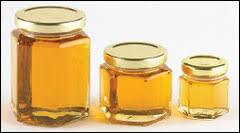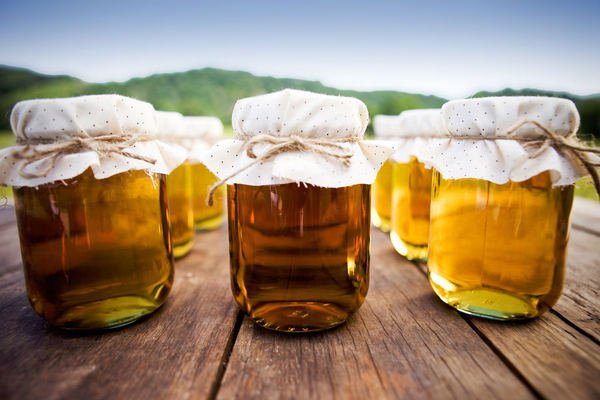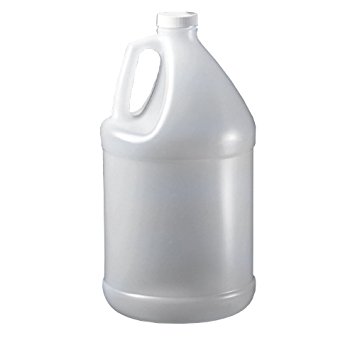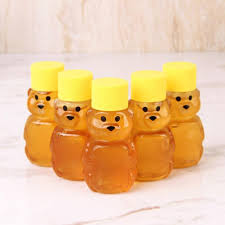Oxydendrum arboreum
Most honey is made by bees. But sourwood is made by bees and angels. – Carson Brewer, writer
 Sourwood honey is so rare that a good crop sometimes only surfaces once every decade. Yet, its deep, spicy flavor makes it sought after by honey connoisseurs everywhere. The honey’s scarcity can be attributed to the very small amount of sourwood trees currently growing. The medium-height tree is indigenous to the United States and grows from southern Pennsylvania to northern Georgia. It is also known as sorrel and lily-of-the-valley. It typically blooms from June to August, providing a small window of time in which beekeepers can bring their colonies to collect nectar from the flowers.
Sourwood honey is so rare that a good crop sometimes only surfaces once every decade. Yet, its deep, spicy flavor makes it sought after by honey connoisseurs everywhere. The honey’s scarcity can be attributed to the very small amount of sourwood trees currently growing. The medium-height tree is indigenous to the United States and grows from southern Pennsylvania to northern Georgia. It is also known as sorrel and lily-of-the-valley. It typically blooms from June to August, providing a small window of time in which beekeepers can bring their colonies to collect nectar from the flowers.
The bloom period is quite short and beekeepers must time themselves accordingly in order to ensure that the bees do not harvest any nectar from other flowering plants. If the bees are brought to the area too soon, they will harvest from the sumac trees that bloom before the sourwood and if they are brought too late, they will miss the beginning of the flow of nectar.
If the honey is produced with the expertise of a skilled beekeeper, the taste has no parallel. Its flavor is floral and light with hints of baking spices and anise. The honey’s color ranges from pure white to light amber with a slightly gray tint and its texture is defined by a smooth, caramel buttery quality. People sometimes liken the flavor to gingerbread and note a “twang” in the aftertaste.
The parameters for classifying the honey are very strict; if it has even small percentages of other varietals it cannot be sold as sourwood. Because purity is key, beekeepers must be trained to have great critical timing skills and attention to detail. Yet even with this expertise, the production of sourwood honey is still a great challenge. The duration of the bloom season is very sensitive to rainfall and the trees need adequate sunlight in order to produce nectar, which can be difficult because sourwood trees are often shorter than the tress that surround them. If the weather patterns are not conducive to good blooming, the producer cannot make the honey for that year.
While production is inherently challenging, other factors currently conspire to make it even more so. The sourwood tree population, already limited, is constantly threatened by development. Colony Collapse Disorder also presents a threat. While this widespread and mysterious phenomenon has yet to affect the bee-colonies, an episode could destroy small-scale producers, driving them to less-sustainable, market-driven practices.
Many honey connoisseurs today agree that Sourwood is the best tasting honey available. Its syrupy, spicy flavor is impossible to find in other varieties. Furthermore, its limited region, season, and supply make it a rare treat and a regional specialty prized for its true distinctiveness.
Sourwood Honey is made by the bees from Sourwood blossom nectar. Good Sourwood Honey can only be made with trees that bloom above 1000 ft. in the mountains of Georgia and Tennessee.




































 Sourwood honey is so rare that a good crop sometimes only surfaces once every decade. Yet, its deep, spicy flavor makes it sought after by honey connoisseurs everywhere. The honey’s scarcity can be attributed to the very small amount of sourwood trees currently growing. The medium-height tree is indigenous to the United States and grows from southern Pennsylvania to northern Georgia. It is also known as sorrel and lily-of-the-valley. It typically blooms from June to August, providing a small window of time in which beekeepers can bring their colonies to collect nectar from the flowers.
Sourwood honey is so rare that a good crop sometimes only surfaces once every decade. Yet, its deep, spicy flavor makes it sought after by honey connoisseurs everywhere. The honey’s scarcity can be attributed to the very small amount of sourwood trees currently growing. The medium-height tree is indigenous to the United States and grows from southern Pennsylvania to northern Georgia. It is also known as sorrel and lily-of-the-valley. It typically blooms from June to August, providing a small window of time in which beekeepers can bring their colonies to collect nectar from the flowers.